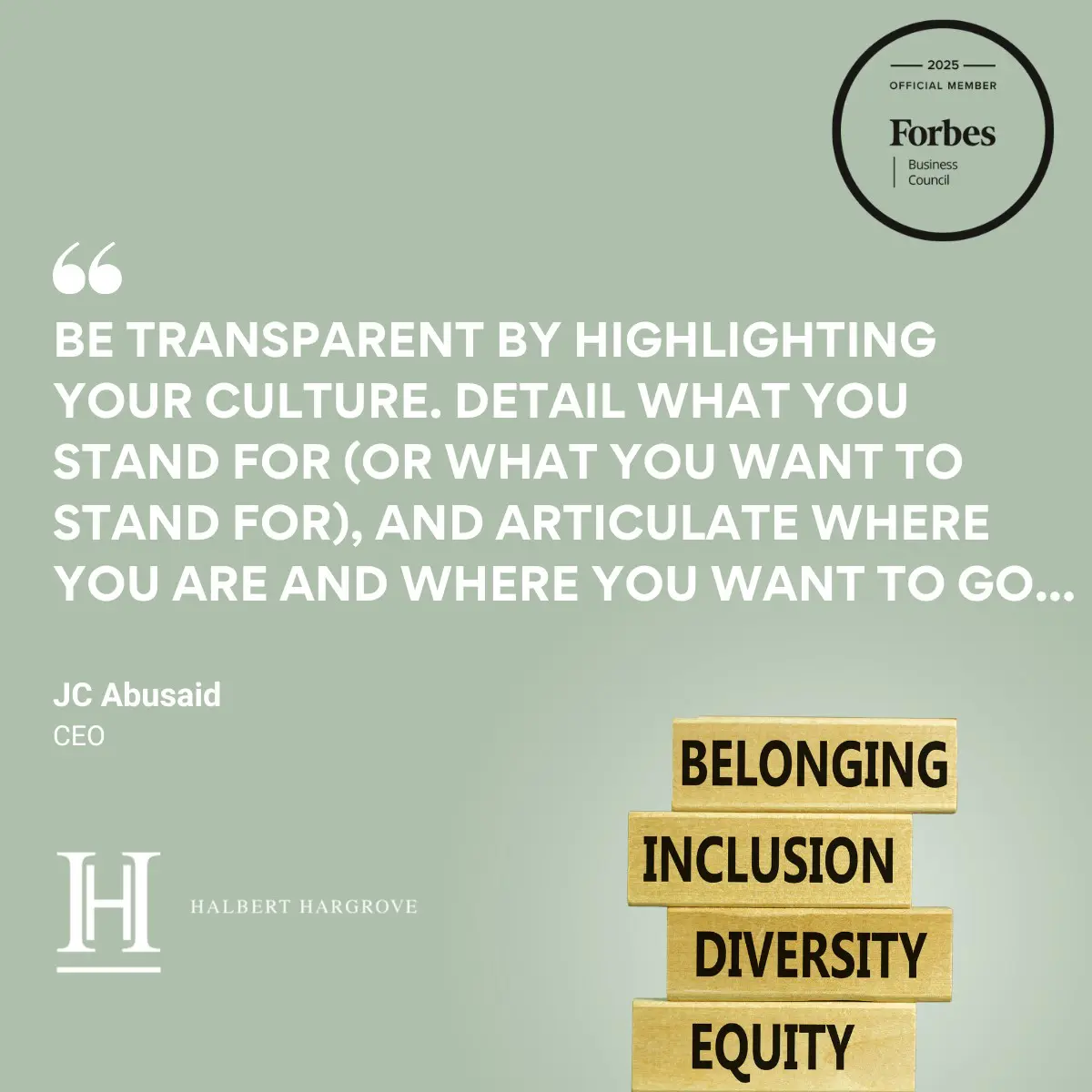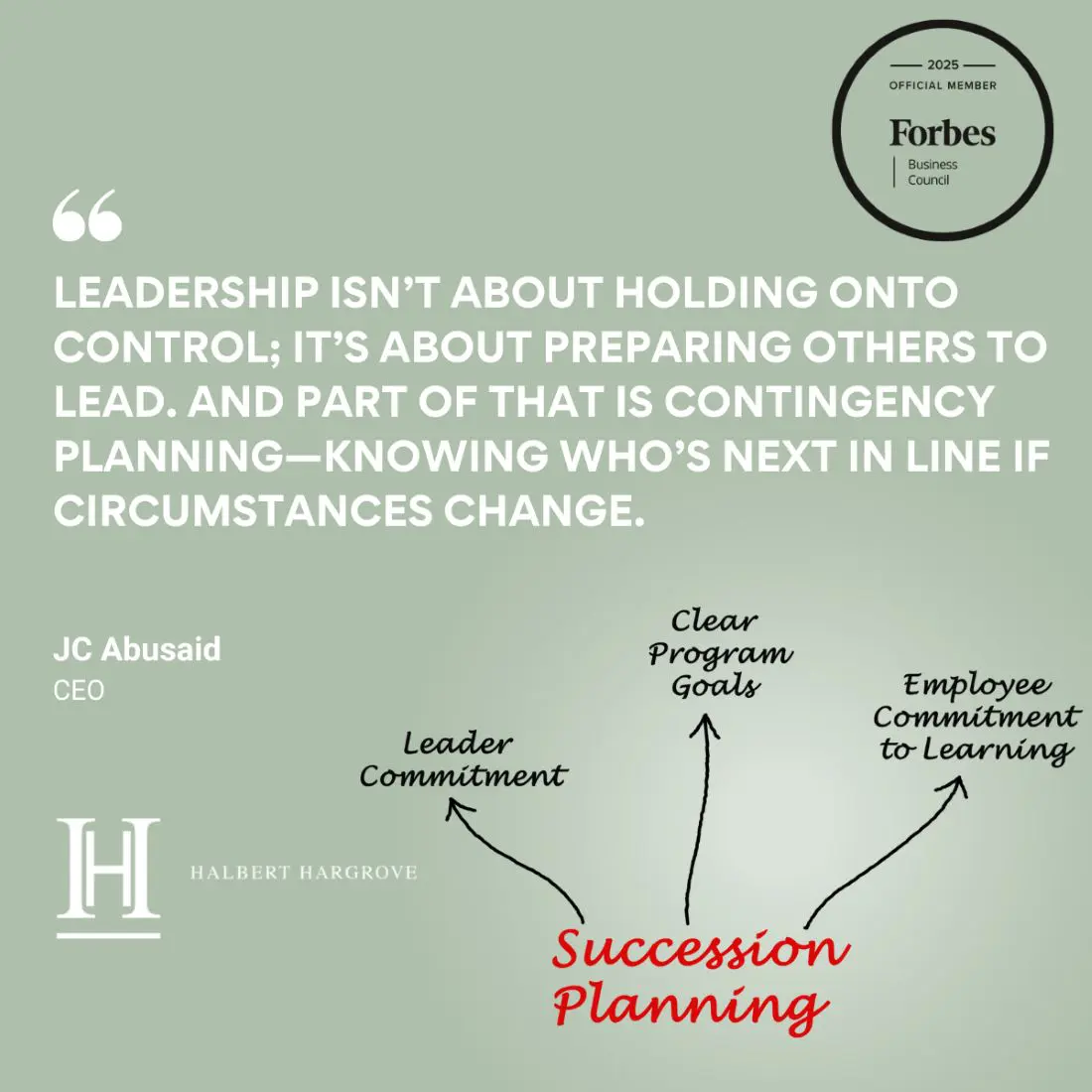By Forbes Business Council featuring JC Abusaid, CEO/President
Enticing diverse talent to join a business is not an easy task. With so many companies seeing the value in candidates from varied backgrounds with a wide range of skills and experiences, these job seekers are more selective than ever regarding where they apply.
From sharing the company’s mission and values in a straightforward way to actively highlighting current employees, making deliberate changes to career pages and throughout the recruitment process helps ensure diverse candidates feel truly supported, whether they join your organization or not.
Below, 20 Forbes Business Council members discuss how HR professionals can improve their company’s career page to ensure they’re attracting a more diverse talent pool. Read on to learn more about proven strategies that can be implemented to boost the quality of candidates.
1. Take A Top-Down Approach
HR can’t create clarity if leadership breeds confusion. The truth is that no career page—no matter how inclusive or flashy—can fix a company where leadership is rigid, opaque or disconnected. If management is clear, communicative and aligned on DEI, HR becomes a creative force. Clarity at the top creates credibility at the bottom. That’s the real strategy. – Salman Khan, The Gideon Group Inc
2. Publicly Commit To Being Inclusive
A bold declaration is the best way to clearly convey the workplace culture and your hiring philosophies. For example, say, “All kinds of people are welcome here. We are not just accepting. We are actively antiracist, pro-women, and an organization that welcomes LGBTQIA+ people. Discrimination and unkindness of any kind will not be tolerated here at any level.” This statement and competitive compensation will yield quality candidates. – Charles Stanton, Transient Consulting
3. Articulate The Value Of Diversity
To attract a more diverse talent pool, the company must articulate the value it places on diversity. Each image and word should mirror the visitor’s experience. Include quotes from employees citing how they feel valued, included and respected. Also, advertise to the right crowd. Your ideal candidate may not be part of your normal reach. Find out where they hang out and bridge that gap. – Loubna Noureddin, Mind Market
4. Be People-Centric
We focus on people first. Our career page highlights real moments—team lunches, birthdays, training, client wins—that showcase our inclusive, growth-driven culture. With our motto, “We want our employees to be our competitors,” we empower ownership. It’s shared across social media, newsletters and on our Hall of Fame wall. – Kushal Chordia, VaaS – Visibility as a Service
5. Lead With Visual Representation
The most effective way to attract a more diverse talent pool is by leading with visual representation. Showcase your culturally diverse workforce and how those employees belong in spaces they may not have traditionally seen themselves in. Representation isn’t just a concept but proof. When people see someone who looks like them doing the work, it shifts their perception of what is possible. – Dennis DuFour, TDEC
6. Create A Culture That Values Diversity
Go further than the career page by embedding diversity into the culture of the company. You can profess to support all sorts of things on a page, but any good potential employee does their research and the company’s approach to equity, diversity and inclusivity will be evident in their reputation. Culture drives diversity. – Marian Evans, Elevate BC Ltd
7. Showcase Inclusive Language And Authentic Imagery
Use inclusive language and authentic imagery that genuinely reflect your diverse team. It’s about accurately portraying the environment you’ve built. When candidates visit our career page, we want them to feel like they belong here before they even apply. For us, it’s always been about not just telling but showing that everyone has a place at Moneypenny with the right attitude. – Jesper With-Fogstrup, Moneypenny
8. Use Personal Stories And Videos Of The Current Team
To attract diverse talent, HR should authentically showcase the current team via personal stories and real videos. Candidates need to see “someone like them.” At my MMO and e-commerce businesses, our best strategy is a “Day in the Life” series through short videos or blogs where diverse employees share their genuine experiences. This helps candidates envision themselves thriving here. – Erik Pham, Bizreport
9. Ensure The Career Page Reflects Your Target Audience
Your career page should reflect who you’re trying to attract, not just who is already there. Use real photos, include inclusive language, and highlight your values in action rather than just as bullet points. Show what diversity looks like inside your culture. Representation isn’t just ethical—it’s magnetic. People apply where they feel they’ll belong. – Dr. Christina Carter, Her Practice®
10. Demonstrate The Value Of Diversity At Every Level
Highlighting leadership diversity and sharing executive statements on inclusion can make a big difference. Show a diverse leadership team to demonstrate that inclusion is valued at every level. Include statements from executives about their commitment to diversity. This builds trust and shows potential candidates the company is serious about fostering an inclusive culture. – Sabeer Nelliparamban, Tyler Petroleum Inc.
11. Actively Prioritize Human Sustainability
HR professionals should play a more active role in human sustainability. It is essential to look after the interest of employees in terms of their mental health and career progression. Nurturing human sustainability will create a mindful atmosphere and provide employees with emotional wellness, reducing their stress levels. – Ramesh Arora, SIGNATURE HOSPITALLITY GROUP
12. Focus On Transparency
Be transparent by highlighting your culture. Detail what you stand for (or what you want to stand for), and articulate where you are and where you want to go, even showcasing your awards if you have them. Complement your career page with an internship program. This will bypass any potential biases that may come from self-selection by a hiring manager or recruiter. – John Abusaid, Halbert Hargrove





